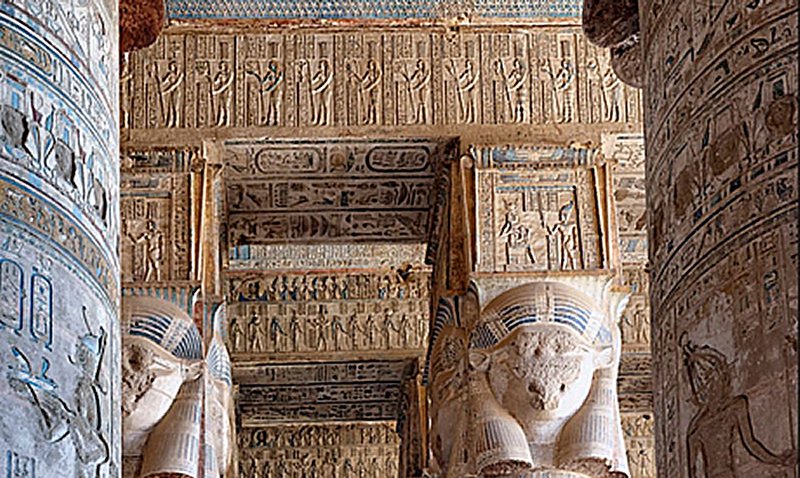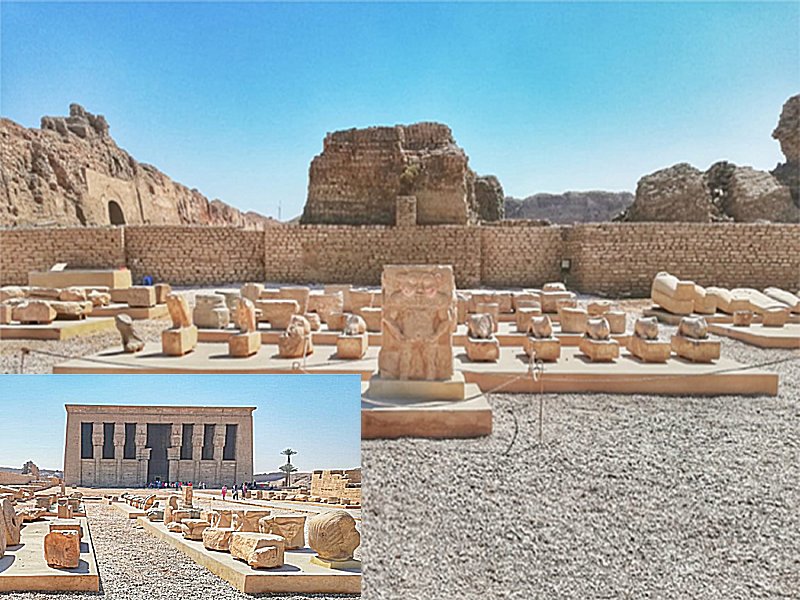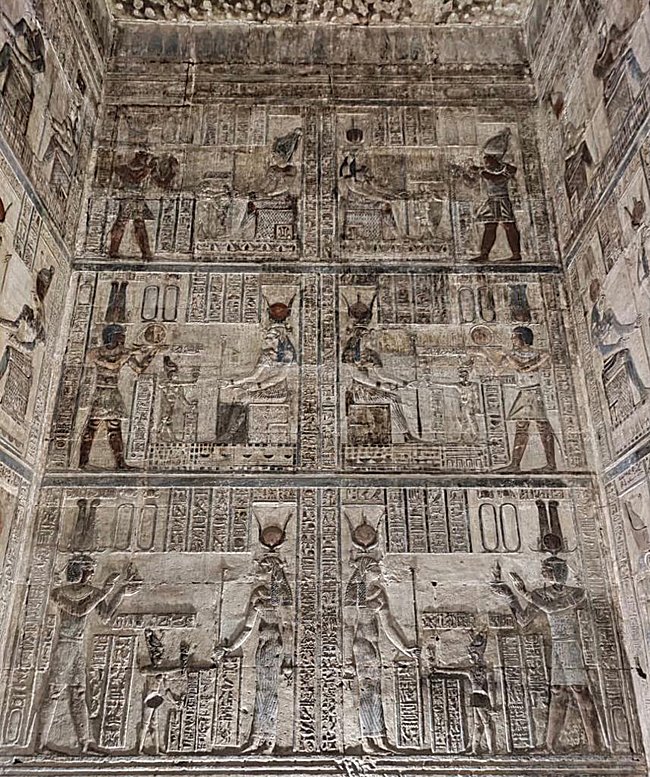Conny Waters – AncientPages.com – The Upper Egyptian Dendera Temple complex dedicated to the goddess Hathor has been for some time under restoration, according to plans presented by Egypt’s Ministry of Tourism and Antiquities.
Now archaeologists completed the second phase of restoration that included cleaning of the great hall, the entrance facade the birth kiosk.

Image credit: Egyptian Ministry of Tourism and Antiquities
In 2020, three crypts and the rooftop of the temple were already opened to the public after restoration.
The Temple of Hathor at Dendera contains a number of small crypts on its eastern, southern, and western sides but archaeologists do not believe these surfaces served as the locations for formal rituals.
However, they could have served as warehouses or treasuries for ritual furnishings, sacred and ceremonial equipment, and the divine images used in celebrating various feasts and holidays.
Mustafa Waziri, secretary-general of the Supreme Council of Antiquities (SCA´said the crypts can only be accessed through small openings and have low ceilings and walls decorated with ancient Egyptian scenes. Only one of the crypts was previously open to the public, reports Ahram Online.
 Image credit: Egyptian Ministry of Tourism and Antiquities
Image credit: Egyptian Ministry of Tourism and Antiquities
The rooftop of the temple was also not previously accessible to visitors, but after restoration, visitors can enjoy the panoramic view of Qena from the top of the building for the first time.
In 2019, in collaboration with a French archaeological mission, blocks, stelae, and statues that were uncovered in the area and left in situ since their initial discovery were finally restored and put on newly fabricated mounts in the open-air area around Dendera Temple north of Luxor.
The displays include artifacts from the area’s store galleries. Newly fabricated blocks have been placed in the open courtyard at the entrance of the temple, where a collection of statues of ancient Egyptian deities has been installed.
 Image credit: Egyptian Ministry of Tourism and Antiquities
Image credit: Egyptian Ministry of Tourism and Antiquities
Among these are statues of the goddess Hathor, the god Bes, the Egyptian dwarf god of song, humor, and dance, and the falcon god Nekhbet Waawet.
The Dendera Temple, one of the best-preserved ancient Egyptian temples, was built by the Greek Ptolomies who ruled Egypt in 305BC – 30BC. The Romans who succeeded them in ruling Egypt added to the temple which was completed under Emperor Tiberius around 155AD.
Dendera temple was dedicated to Hathor, the Egyptian goddess of Sєxuality and maternal care. It contained the traditional birth house, the mammisi, an ancient Egyptian small chapel attached to a larger temple, which was later converted into a church in the fifth century. A Christian basilica was constructed in the area between it and the original birth house of Nectanebo.
The structure was reconstructed by the Roman emperor Augustus near the ruins of the one built by the Pharaoh Nectanebo and is adorned with reliefs added by the Roman emperor Trajan relating to the birth of the god Horus.
The temple of Dendera was excavated by French Egyptologist Auguste Mariette in the mid-19th century.
Written by Conny Waters – AncientPages.com Staff Writer





